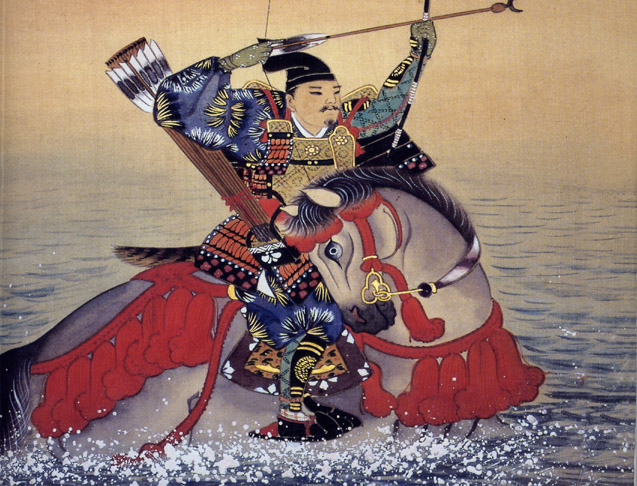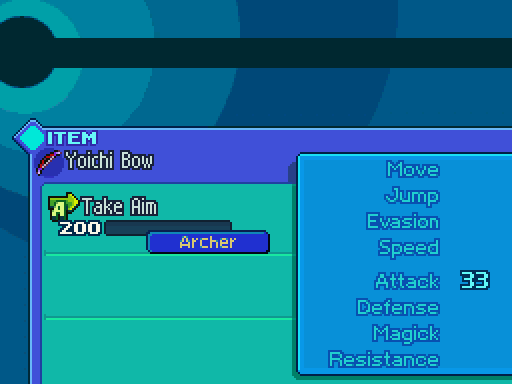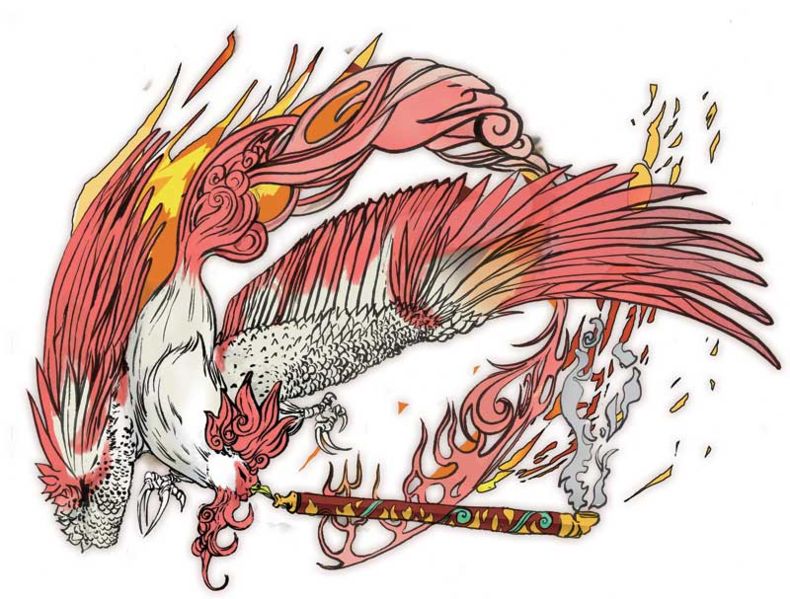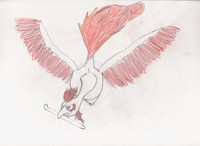Part 13: Mythology Dissection 1

Brush God Moegami and Sei-an City Characters
Yoichi the archer

Yoichi is based on Nasu no Yoichi, a samurai from the 12th century. He fought alongside the Minamoto clan in the Genpei war in the late 1100’s. Remember the Minamoto clan? That’s Ushiwaka’s (Waka’s) family.
Yoichi was most famous for his archery skills. Legend has it that during the Battle of Yashima, the enemy Taira flew a special flag from the mast of one of their ships. They claimed the flag was enchanted to protect the ship from arrows, and dared the Minamoto archers to try and shoot it. Nasu guided his horse out into the waves and took careful aim. Despite being battered by the surf, and the enemy boat rocking with the waves, he shot the flag down with only a single arrow. That’s some serious Robin Hood shit right there, I tell ya!

Nasu no Yoichi, during the Battle of Yashima
The name Yoichi often appears in Japanese games, and it’s always associated with archery. For example, there is a Yoichi Bow in the Final Fantasy Tactics series.

Next, here's our newest Brush God:

Moegami- the rooster, god of fire. "Moe" comes from the verb "Moeru", which means "to burn."
Rooster traits: Acute, neat, meticulous, organized, self-assured, decisive, conservative, critical, perfectionist, alert, zealous, practical, scientific, responsible. Can be over zealous and critical, puritanical, egotistical, abrasive, proud, opinionated, given to empty bravado.
The rooster spotted a raft on the river bank, but he knew he would be unable to pilot it to the other side without help. He offered to let the ram and monkey ride the raft with him if the other two would help him clear away the reeds. The other two agreed. Thus, the ram, monkey, and rooster finished 8th, 9th, and 10th.
Moegami may represent the rooster in the zodiac, but he’s obviously also a phoenix. His aspect is fire, reborn from ice and rekindled in the statues on the road to Sei-an City. The phoenix is a mythological fire bird found in many cultures. At the end of its life, the phoenix makes a funeral pyre of its nest and burns to death so it can be reborn from its own ashes. The phoenix represents the cycle of life and death, and is a symbol of rebirth and immortality.

Ho-oegami
Sei-an City
Sei-an City is the city of Kyoto, ancient capital of Japan, during the Heian period (794 - 1185 A.D.). The Heian period is named after the city of Heian-kyo, modern-day Kyoto. This period is also considered the peak of Japanese Imperial rule. Heian means "peace and tranquilty."
Oh, and you probably noticed, the carpenter guy says Sei-an City is built on top of a lake: Lake Beewa. Obviously, this is a more direct reference to Japan's largest lake, Lake Biwa, which is near Kyoto.
Benkei
The fishing warrior-monk, Benkei is based on an historic character of the same name. Benkei was Yoshitsune’s (Ushiwaka’s) most loyal retainer and right hand man.
According to legend, Benkei was a great warrior who guarded Gojo Bridge in Kyoto. It was said that he fought and disarmed every passing swordsmen, and kept their swords as a trophy. In this fashion, he eventually amassed 999 swords. The 1,000th warrior he encountered was Minamoto no Yoshitsune. You all rememeber him? Yeah. That duel did not go well for Benkei. He lost the duel, and pledged his loyalty to Yoshitsune, becoming his most loyal retainer. Benkei was killed during the battle where he and Yoshitsune made their last stand. Yoshitsune committed ritual suicide, while Benkei guarded the bridge to the keep. He held off hundreds of warriors, and died in a standing position, riddled with arrows.
Samurai
Samurai were the members of the privileged warrior class of feudal Japan. Samurai were essentially minor nobility. They were highly educated, could marry, and have children. In that sense, they were a bit like medieval knights. Samurai followed a strict code of conduct, called bushido (way of the warrior). They were utterly beholden to their lord, the Daimyo, and ultimately to the Emperor. At any time, their liege could order them to pay the ultimate price in his name, by committing seppeku or ritual suicide. A disgraced samurai could also commit seppeku, also called harakiri, of his own accord to regain his honor. It was not a painless death. The samurai had to stab himself in the abdomen with a long dagger, slicing it back and forth to cut up his entrails.
 Once that was done, he had to kneel, unmoving, with the dagger still in his gut, while his most loyal retainer cut off his head with the Samurai’s own blade. Yyyep. Samurai were Hard. Fucking. Core.
Once that was done, he had to kneel, unmoving, with the dagger still in his gut, while his most loyal retainer cut off his head with the Samurai’s own blade. Yyyep. Samurai were Hard. Fucking. Core. 
SweaterGear posted:
So why does the game keep making you talk to plot important NPCs multiple times, rather than have them keep talking on their own? And, why are there 2 "Want to continue with the game?" questions in a row!? Those are a design decision I'll never understand.
The illusion of choice, I suppose? Or just offering you the opportunity to go faffing around in the field some more, rather than having all the plot dumped on you at once.